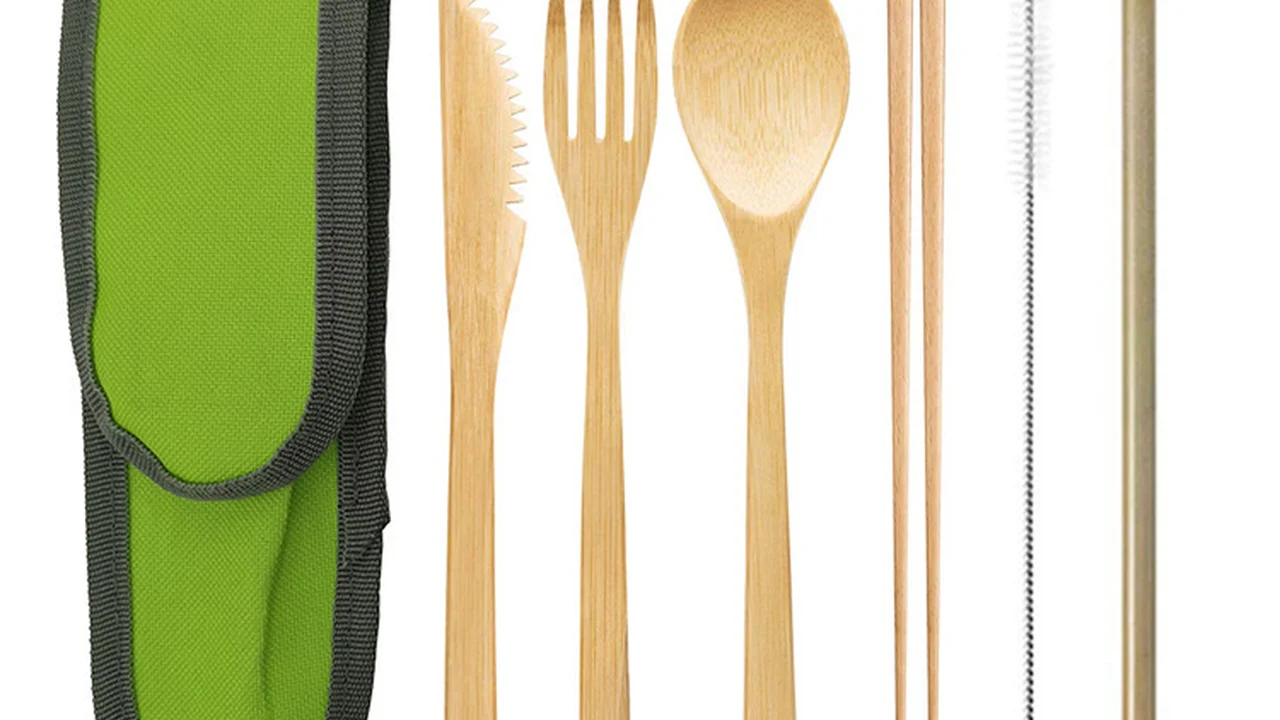Bamboo Travel Utensils Cutlery Sets
A review of solar chargers and power banks for sustainable travel. Keep your devices charged while reducing your reliance on electricity. Choose a solar charger or power bank for your next adventure.

Why Consider Solar Chargers and Power Banks for Eco-Friendly Travel Gear
Okay, let's talk juice! We all rely on our phones, cameras, and other gadgets when we're traveling. But plugging into the grid isn't always the most eco-friendly option, especially when you're trying to minimize your impact. That's where solar chargers and power banks come in. They let you harness the power of the sun or store energy from a clean source, keeping your devices powered up while reducing your carbon footprint. Plus, they're super handy when you're off the beaten path and outlets are scarce. Think hiking in Yosemite, backpacking through Southeast Asia, or just chilling on a beach – solar power is your friend!
Understanding Solar Charger Technology and Power Bank Basics
First things first: solar chargers use photovoltaic (PV) cells to convert sunlight into electricity. The electricity can either directly charge your device or be stored in a battery. Power banks, on the other hand, store electricity from a wall outlet or other power source. Some power banks can also be charged via solar panels, giving you the best of both worlds.
When choosing a solar charger or power bank, consider these factors:
- Capacity: Measured in mAh (milliampere-hours), this indicates how much energy the power bank can store. A higher mAh rating means you can charge your devices more times before needing to recharge the power bank.
- Solar Panel Efficiency: This determines how quickly the solar charger can convert sunlight into electricity. Higher efficiency means faster charging.
- Size and Weight: Important for travelers who are conscious of packing light.
- Durability: Look for chargers and power banks that are water-resistant, shockproof, and built to withstand the rigors of travel.
- Ports: Consider the number and type of ports (USB-A, USB-C) to ensure compatibility with your devices.
Top Solar Charger Recommendations and Product Reviews
Alright, let's get into some specific recommendations. These are a few of my favorite solar chargers and power banks for sustainable travel, along with their pros, cons, and typical usage scenarios:
Anker PowerCore Solar 10000 mAh: A Reliable Solar Power Bank for Everyday Use
Description: This power bank features a built-in solar panel for emergency charging and a 10000 mAh battery for multiple device charges. It's durable and water-resistant, making it ideal for outdoor adventures.
Pros: Compact, water-resistant, reliable brand, good battery capacity.
Cons: Solar charging is slow; primarily designed as a power bank with solar as a backup.
Usage Scenario: Day hikes, camping trips, general travel where you have access to sunlight for supplemental charging.
Price: Around $35-$45
Goal Zero Nomad 5 Solar Panel: A Portable Solar Panel for Charging Small Devices
Description: This is a small, lightweight solar panel designed for charging phones, tablets, and other small USB devices directly from the sun. It's great for backpacking and situations where weight is a concern.
Pros: Lightweight, portable, durable, direct charging capability.
Cons: Requires direct sunlight, charging speed depends on sunlight intensity, no battery storage.
Usage Scenario: Backpacking, hiking, emergency preparedness, off-grid charging.
Price: Around $60-$70
BigBlue 28W USB Solar Charger: A High-Powered Solar Charger for Multiple Devices
Description: This solar charger features multiple USB ports and a high-efficiency solar panel, allowing you to charge multiple devices simultaneously. It's ideal for group travel or situations where you need to charge several devices quickly.
Pros: High power output, multiple USB ports, folds for easy storage.
Cons: Larger and heavier than other options, requires direct sunlight, no battery storage.
Usage Scenario: Camping, road trips, group travel, base camp charging.
Price: Around $70-$80
RAVPower Solar Charger 24W: A Foldable and Efficient Solar Panel for Travel
Description: A highly efficient foldable solar panel with dual USB ports. It’s lightweight and easy to carry, making it perfect for backpacking, hiking, and camping.
Pros: Fast charging, durable, portable design, weather-resistant.
Cons: No built-in battery, performance relies heavily on sunlight.
Usage Scenario: Ideal for extended outdoor adventures where access to electricity is limited.
Price: Approximately $60-$75.
Comparing Solar Chargers and Power Banks: Features, Performance, and Prices
So, how do these different options stack up? Here's a quick comparison table:
| Product | Type | Capacity/Power | Pros | Cons | Price |
|---|---|---|---|---|---|
| Anker PowerCore Solar 10000 | Power Bank with Solar | 10000 mAh | Compact, water-resistant, reliable | Slow solar charging | $35-$45 |
| Goal Zero Nomad 5 | Solar Panel | 5W | Lightweight, portable | Requires direct sunlight, no battery | $60-$70 |
| BigBlue 28W USB Solar Charger | Solar Charger | 28W | High power, multiple ports | Larger, heavier | $70-$80 |
| RAVPower Solar Charger 24W | Solar Charger | 24W | Foldable, efficient | No battery, sunlight dependent | $60-$75 |
Performance Considerations: Remember that solar charging speeds are highly dependent on sunlight intensity. On a cloudy day, you might not get much of a charge. Also, the efficiency of solar panels can vary, so read reviews carefully before making a purchase.
Price Variations: Prices can fluctuate depending on the retailer and any ongoing sales. Check multiple sources to find the best deals.
Real-World Usage Scenarios for Solar Charging and Power Bank Solutions
Let’s paint some pictures to help you decide which option suits your travel style:
- Backpacking Trip in Southeast Asia: The RAVPower Solar Charger 24W paired with a separate high-capacity power bank would be a great choice. You can charge the power bank during the day while hiking and use it to charge your devices at night.
- Camping in a National Park: The BigBlue 28W USB Solar Charger is ideal for charging multiple devices for a group. Set it up at your campsite during the day and keep everyone's phones and cameras powered up.
- Day Hiking in the US: The Anker PowerCore Solar 10000 is a convenient and reliable option for keeping your phone charged for navigation and photos. The solar panel provides a backup charging option in case you run out of power.
- City Exploring: Having the Anker PowerCore Solar 10000 in your backpack as you explore a city will help you stay connected without having to worry about finding a charging point.
Sustainable Travel Tips for Maximizing Battery Life Naturally
Of course, the best way to conserve energy is to use it wisely! Here are a few tips for maximizing battery life on your devices while traveling:
- Turn off unnecessary features: Disable Bluetooth, Wi-Fi, and location services when you're not using them.
- Lower screen brightness: A brighter screen consumes more power.
- Close unused apps: Apps running in the background can drain your battery.
- Enable airplane mode: When you don't need to be connected, airplane mode can significantly extend battery life.
- Carry a portable power bank: A small power bank can be a lifesaver when you're on the go.
Ethical Considerations When Purchasing Electronics for Sustainable Travel
Before you buy any electronic device, take a moment to consider its environmental and social impact. Look for products from companies that are committed to sustainability, use recycled materials, and have fair labor practices. Also, remember to recycle your old electronics responsibly to prevent harmful materials from ending up in landfills.
:max_bytes(150000):strip_icc()/277019-baked-pork-chops-with-cream-of-mushroom-soup-DDMFS-beauty-4x3-BG-7505-5762b731cf30447d9cbbbbbf387beafa.jpg)






